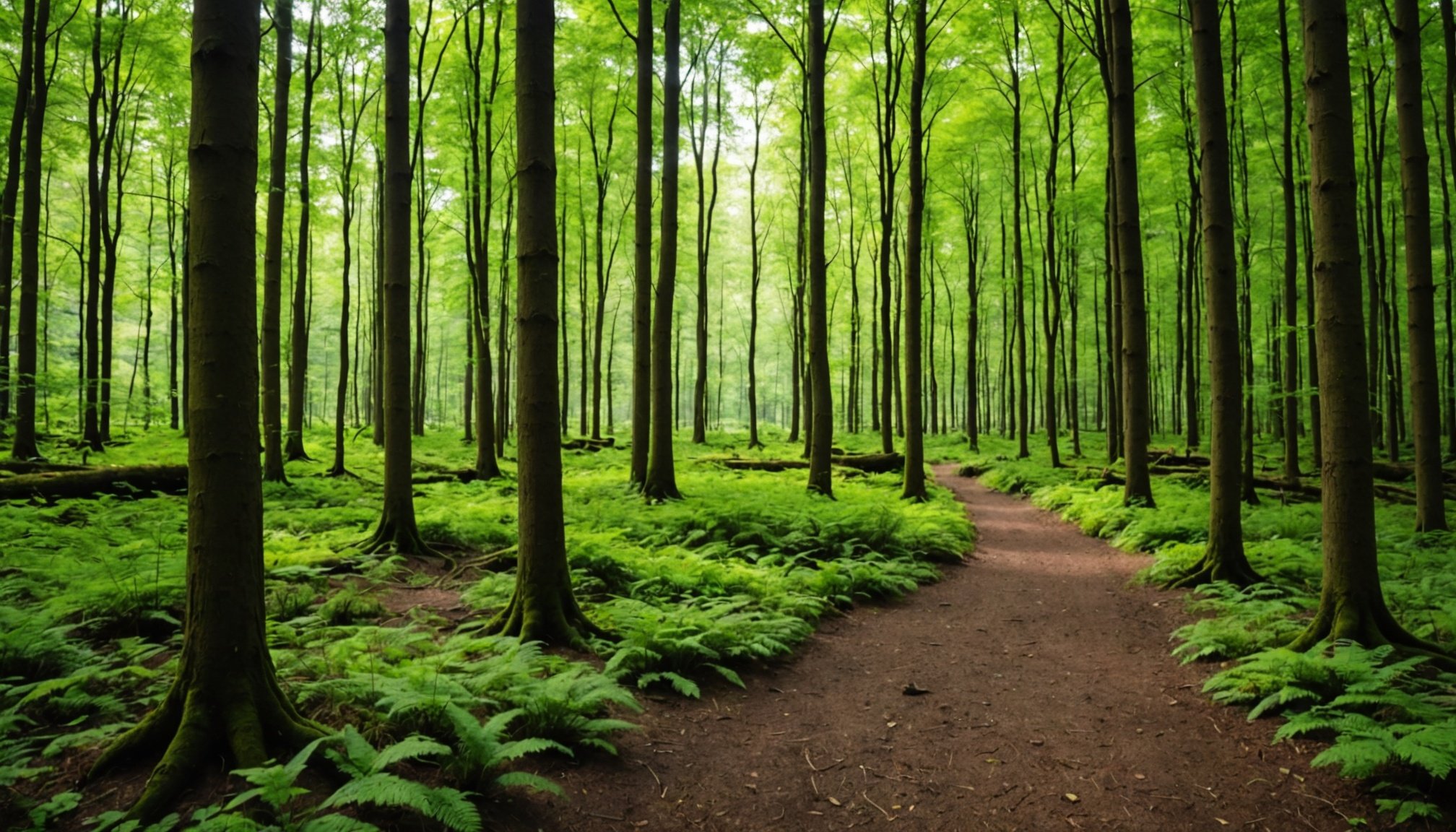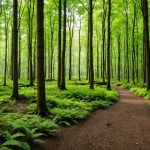Definition and Origins of Forest Bathing
Forest bathing, or Shinrin-yoku, is a practice originating from Japan in the 1980s as a form of preventive healthcare and nature connection. The term translates to “taking in the forest atmosphere,” emphasising the immersive experience of being in nature. Unlike nature therapy, which historically involves various forms of engaging with natural environments for mental and physical health improvements, forest bathing specifically focuses on mindful engagement with the forest.
In Japan, Shinrin-yoku has deep cultural roots. It emerged as a government initiative to manage rising stress levels among urban populations, promoting the therapeutic effects of nature. By wandering through forests, individuals engage their senses, fostering a deeper connection with the environment, which modern nature therapy practices often aim to replicate and evolve from this foundational approach.
Also to discover : Revolutionizing copd management: the life-changing benefits of well-designed exercise programs
Nature therapy has evolved globally, adapting Shinrin-yoku’s principles to include various natural settings like parks and gardens. Over time, this evolution underscores the increasing recognition of nature’s role in holistic well-being. By integrating Shinrin-yoku’s methods, people worldwide find personalised ways to incorporate these calming practices into their lives, enhancing overall health through nature immersion.
Scientific Research on Stress Reduction
Recent scientific studies have shed light on the promising connection between forest bathing and stress reduction. By immersing in natural environments, individuals are found to experience notable decreases in stress hormone levels. One such study demonstrated that a mere 20-minute exposure to forest settings could significantly lower cortisol, the primary stress hormone, implying tangible health benefits.
Also to discover : Revolutionizing office environments: how ergonomic design can help prevent repetitive strain injuries
The biological mechanisms underlying these effects involve various sensory stimuli encountered in forest environments. The aroma of phytoncides, the natural chemicals released by trees, has been shown to bolster the immune system and decrease stress. Furthermore, natural sights and sounds trigger relaxation responses in the brain, contrasting sharply with urban environments, where noise and pollution often contribute to heightened stress levels.
When compared to urban environments, forest sites offer a unique psychological respite. Urban areas are densely populated and overloaded with stimuli that can wear down mental resilience, leading to anxiety and stress. In contrast, the serenity of forest settings helps recalibrate the mind, offering a peaceful retreat that fosters emotional well-being. This growing body of research underscores the importance of integrating natural spaces into daily life for improved mental health outcomes.
Practical Tips for Forest Bathing
Forest bathing offers a tranquil retreat from the hustle and bustle of everyday life. To experience its full potential, immersive experiences are key. Begin by choosing a serene forest or park setting—somewhere you feel safe and connected to nature. It’s ideal to opt for quiet locations that naturally invite mindfulness, away from vehicles or urban noise.
When understanding how to practice forest bathing, remember: it’s not about covering distance but immersing in the moment. Move slowly and attentively, engaging all your senses. Listen to the rustle of leaves, observe the shifting patterns of light, breathe in the earthy scents, and feel the textures around you. This sensory awareness deepens the experience.
Enhancing your experience further means disconnecting from technology. Phones and gadgets should be left behind or silenced to prevent interruptions. Consider a session duration of at least an hour for optimal immersion, slowly increasing time as you grow accustomed. Of course, forest bathing doesn’t end when you leave the woods. Incorporating regular practice into your lifestyle helps reinforce its calming effects.
Finally, respect nature. Following guidelines of practical advice ensures the environment remains pristine for others. Leave no trace behind and take only memories with you.
Mental Health Benefits of Forest Bathing
Forest bathing has profound impacts on mental health, fostering emotional resilience through connection with natural environments. Individuals engaging in Shinrin-yoku report improved emotional well-being, citing its therapeutic effects on anxiety and depression. The practice allows participants to disconnect from stressors, focusing instead on the present moment, which inherently promotes relaxation.
The environment itself facilitates these therapeutic effects. Natural surroundings encourage mindfulness, reducing the prevalence of rumination—a common symptom in anxiety and depression. The calming effects of the forest atmosphere are akin to meditative practices, bolstering mental health by providing a peaceful space to process emotions and challenges.
Testimonials from practitioners highlight transformative experiences. Many describe a sense of grounding and clarity after regular forest baths. For some, forest bathing serves as a supportive therapeutic tool alongside traditional methods. As individuals share personal stories, the overarching theme is one of enhanced emotional coping, an increased sense of peace, and better psychological balance.
These personal accounts underscore the value of incorporating forest bathing into wellness routines. By fostering emotional steadiness and mental fortitude, forest bathing offers a unique and holistic approach to maintaining mental health.
Creating a Forest Bathing Routine
A regular forest bathing routine can greatly enhance well-being by integrating tranquility into one’s lifestyle. Begin by designating specific times each week for nature immersion, prioritising consistency over duration. This consistency allows the mind to anticipate moments of peace, which improves overall mental health.
Incorporating forest bathing into daily life doesn’t require access to vast forests. Local parks or gardens provide a suitable alternative, offering their own serene environments where you can practice Shinrin-yoku’s mindful principles. Pay attention to the therapeutic effects of these green spaces; even brief interactions offer valuable respite from daily stressors.
Creating a community with similar interests enriches the experience. Join groups or workshops focused on regular practice of Shinrin-yoku. Engaging with a community fosters shared experiences and opens avenues for learning and personal growth. Resources like guided walks or nature-based activities can support building your forest bathing habit.
Nature immersion can be uniquely personal. Document and reflect on your experiences by keeping a journal. This practice not only solidifies routine but also enhances the emotional impact of each outing. Essentially, integrating forest bathing into your lifestyle nurtures a balanced interaction with nature, promoting sustainable emotional well-being.
Visual and Narrative Elements
A critical part of forest bathing is the captivating scene set by scenic imagery. As you embark on this journey, consider the lush greens and dappled sunlight that paint a vivid picture of tranquility. These visual elements not only enhance your experience but also invite others to appreciate nature’s intrinsic beauty.
Storytelling adds a personal dimension to forest bathing. Narratives from individuals who have immersed themselves in forests reveal transformative experiences. For instance, one might describe how the gentle whisper of the wind through leaves fosters a deep sense of calm. Through such stories, the emotional journey becomes relatable and inspiring, nudging others to embrace this soothing practice.
Encouraging others to document their personal forest bathing adventures further enriches the narrative. By capturing thoughts and feelings, either through writing or photography, individuals contribute to a tapestry of shared experiences. This practice not only personalizes the journey but also amplifies nature’s therapeutic role.
Finally, sharing these documented narratives can foster a community of like-minded individuals. By connecting through shared stories, people find encouragement to explore forest bathing and experience its profound effects firsthand.











